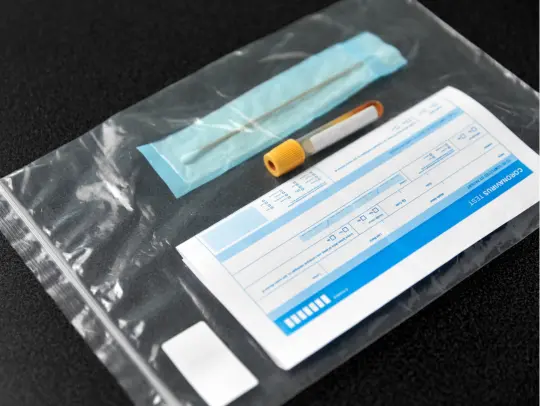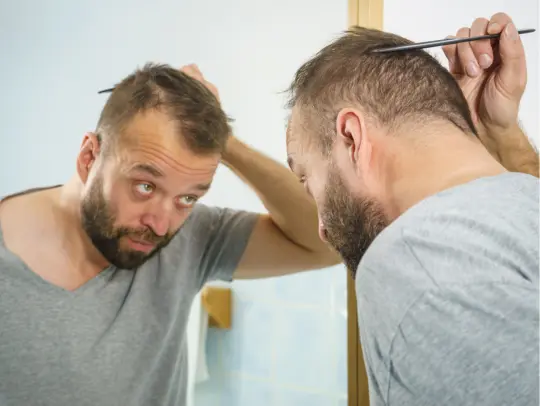
Micropenis: A Comprehensive Medical Guide to Understanding, Treatment, and Living Confidently
Understanding Micropenis: Complete Medical Guide & Resources
Understanding micropenis requires moving beyond misconceptions and stigma to examine the medical facts, available treatments, and support systems. This comprehensive guide provides evidence-based information about the condition, explores various treatment options, and addresses the crucial psychological and social aspects that contribute to overall well-being and quality of life.
By providing accurate medical information and emphasizing the importance of professional healthcare and psychological support, we aim to help individuals, families, and healthcare providers better understand this condition and the pathways to optimal care and life satisfaction.
Medical Definition and Diagnostic Criteria
Understanding the Clinical Definition
Micropenis is medically defined as a condition where the penis is significantly smaller than the average range for the individual's age and developmental stage. The diagnosis is based on specific measurements and statistical comparisons to established norms for penis size across different age groups.
Key Diagnostic Measurements
Adult Diagnosis: Stretched penile length less than 7 centimeters (2.75 inches)
Prevalence: Approximately 0.6% of males worldwide
Statistical Threshold: More than 2.5 standard deviations below the mean
The diagnosis of micropenis is made using the stretched penile length measurement, which involves gently stretching the penis and measuring from the pubic bone to the tip of the glans. This measurement is considered more accurate than measurements of the flaccid penis, as it better approximates erect length and eliminates variations due to temperature, anxiety, or other temporary factors.
Newborn
Less than 1.9 cm (0.75 inches)
Age 1 Year
Less than 2.3 cm (0.9 inches)
Adult
Less than 7 cm (2.75 inches)
It's crucial to distinguish between micropenis and other conditions that may cause the penis to appear smaller, such as buried penis syndrome, where normal-sized penile tissue is hidden by surrounding fat or skin. Proper medical evaluation is essential for accurate diagnosis and appropriate treatment planning.
The diagnosis also considers the presence of normally formed penile structures, including a properly positioned urethral opening (meatus) and normal penile curvature. In true micropenis, the penis is structurally normal but simply smaller than average, which distinguishes it from other developmental abnormalities of the male reproductive system.
Causes and Risk Factors
Understanding the Underlying Mechanisms
The development of micropenis is primarily linked to hormonal imbalances during crucial periods of fetal development. Understanding these causes helps in determining appropriate treatment approaches and provides insight into potential prevention strategies for future pregnancies.
Hormonal Factors
The most common cause of micropenis is insufficient testosterone exposure during critical developmental windows in fetal development. Testosterone is essential for proper penile growth, particularly during the second and third trimesters of pregnancy when significant penile development occurs.
Several hormonal conditions can lead to inadequate testosterone levels or action:
- Hypogonadotropic hypogonadism: Insufficient production of hormones that stimulate testosterone production
- Primary testicular failure: The testes fail to produce adequate testosterone despite normal hormonal signals
- Androgen insensitivity: Normal testosterone levels but reduced tissue response to the hormone
- 5-alpha reductase deficiency: Inability to convert testosterone to its more potent form, dihydrotestosterone
Genetic Factors
Genetic abnormalities can affect hormone production, hormone receptors, or the developmental pathways involved in genital formation. Some genetic conditions associated with micropenis include:
- Kallmann syndrome (affecting GnRH production)
- Prader-Willi syndrome
- Various chromosomal abnormalities
- Mutations in genes controlling testicular development
Environmental and Maternal Factors
Certain environmental exposures during pregnancy may increase the risk of micropenis, though these factors are less well-established than hormonal and genetic causes. Potential risk factors include exposure to endocrine-disrupting chemicals, certain medications during pregnancy, and maternal health conditions affecting hormone levels.
Important Medical Facts
- Micropenis is not caused by poor nutrition, lifestyle factors, or psychological issues
- The condition is determined during fetal development, not during childhood or adolescence
- Early diagnosis allows for optimal treatment timing and outcomes
- Most cases are isolated occurrences without other significant abnormalities
Function and Sexual Health
Addressing Common Misconceptions
One of the most important aspects of understanding micropenis is recognizing that size does not determine function. Despite being smaller than average, a micropenis typically functions normally in terms of urination, sensation, and sexual response.
Normal Physiological Function
Men with micropenis generally experience normal:
- Urinary function: Normal urination and bladder control
- Sexual sensation: Full range of tactile sensation and pleasure
- Erectile function: Normal ability to achieve and maintain erections
- Orgasmic function: Normal orgasmic response and ejaculation
- Hormone production: Typically normal testosterone levels in adulthood (if underlying hormonal issues are treated)
Sexual Satisfaction and Relationships
Research indicates that sexual satisfaction is influenced by many factors beyond penis size, including emotional connection, communication, technique, and overall relationship quality. Many men with micropenis report satisfying sexual relationships and positive sexual experiences.
Common Myth
"Penis size determines sexual ability and partner satisfaction"
Medical Fact
"Sexual satisfaction depends on multiple factors including emotional intimacy, communication, and technique"
Studies have shown that partner satisfaction in sexual relationships is more closely correlated with factors such as emotional intimacy, communication, foreplay duration, and overall relationship quality rather than penis size alone. This research emphasizes the importance of viewing sexual health holistically rather than focusing solely on anatomical measurements.
Fertility Considerations
Fertility in men with micropenis depends largely on the underlying cause of the condition. If the micropenis is due to hormonal deficiencies that affect sperm production, fertility may be impacted. However, many men with micropenis have normal fertility, especially when any underlying hormonal issues are properly treated.
For men experiencing fertility challenges, assisted reproductive technologies and fertility treatments are available and can be highly effective. Consultation with reproductive endocrinologists can provide personalized guidance based on individual circumstances.
Treatment Options and Medical Interventions
Surgical Options
Surgical interventions for micropenis are less commonly recommended and are typically considered only in severe cases or when other treatments have not provided satisfactory results. Surgical options may include:
- Penile lengthening procedures: Various surgical techniques aimed at increasing penile length
- Penile reconstruction: More extensive procedures for severe cases
- Gender reassignment: In rare cases and after extensive counseling, some individuals may choose gender reassignment
Surgical options require careful consideration of risks, benefits, potential complications, and realistic outcome expectations. These procedures should only be performed by experienced specialists and after comprehensive psychological evaluation and counseling.
Psychological Impact and Mental Health Support
Addressing the Emotional Aspects
The psychological impact of micropenis can be significant, affecting self-esteem, body image, sexual confidence, and overall quality of life. Addressing these psychological aspects is as important as medical treatment in achieving optimal outcomes and life satisfaction.
Common Psychological Challenges
Individuals with micropenis may experience various psychological challenges throughout their lives:
- Body image concerns: Negative feelings about physical appearance and masculinity
- Sexual anxiety: Worry about sexual performance and partner acceptance
- Social anxiety: Concerns about locker rooms, medical examinations, and intimate relationships
- Depression and isolation: Withdrawal from social and intimate relationships
- Identity issues: Questions about masculinity and sexual identity
The Importance of Professional Support
Professional psychological support can be transformative for individuals with micropenis and their families. Mental health professionals who specialize in sexual health and body image issues can provide:
- Cognitive-behavioral therapy to address negative thought patterns
- Sex therapy to improve sexual confidence and communication skills
- Support groups connecting individuals with others facing similar challenges
- Family counseling to help family members provide appropriate support
- Couples counseling to improve intimate relationships
Building Resilience and Confidence
Key strategies for psychological well-being include:
- Education: Learning accurate information about the condition and treatment options
- Professional counseling: Working with qualified mental health professionals
- Support networks: Connecting with understanding friends, family, and support groups
- Self-advocacy: Developing skills to communicate needs and boundaries
- Holistic wellness: Focusing on overall health, hobbies, and life goals
Supporting Children and Adolescents
For parents of children diagnosed with micropenis, providing appropriate support involves age-appropriate communication about the condition, ensuring access to medical and psychological care, and fostering a positive body image and self-esteem.
During adolescence, when body image concerns may intensify, continued psychological support becomes particularly important. Helping teenagers develop healthy coping strategies, communication skills, and realistic expectations about relationships and sexuality can significantly impact their long-term well-being.
Living Successfully with Micropenis
Strategies for Thriving
Many individuals with micropenis lead successful, confident, and fulfilling lives. Success often involves a combination of appropriate medical care, psychological support, healthy relationships, and personal growth strategies.
Relationship and Dating Considerations
Building successful romantic and intimate relationships involves developing confidence, communication skills, and finding compatible partners who value the whole person rather than focusing solely on physical attributes.
Strategies for successful relationships include:
- Developing strong communication and emotional intimacy skills
- Building confidence through personal growth and achievements
- Learning about sexuality beyond traditional penetrative intercourse
- Finding partners who are understanding and supportive
- Seeking couples counseling when needed to improve relationship dynamics
Professional and Social Success
Micropenis does not limit professional, academic, or social achievements. Many successful individuals with this condition have excelled in various fields including medicine, business, arts, sports, and public service. Building a full and meaningful life involves pursuing personal interests, career goals, and meaningful relationships.
Advocacy and Awareness
Some individuals choose to become advocates for greater awareness and understanding of micropenis, helping to reduce stigma and improve support for others facing similar challenges. This advocacy can take many forms, from supporting research and medical education to raising awareness about the importance of psychological support and body positivity.
Future Directions and Research
Advancing Understanding and Treatment
Ongoing research continues to improve our understanding of micropenis and develop new treatment approaches. Areas of active research include:
- Genetic research: Better understanding of genetic causes and potential gene therapies
- Hormonal treatments: Optimizing hormone therapy protocols and timing
- Surgical techniques: Developing safer and more effective surgical options
- Psychological interventions: Improving mental health support and therapy approaches
- Prevention research: Understanding environmental factors and prevention strategies
Medical Grade Penis Pump
Electric Male Enhancement Vaccum
Male Enhancement Medical Grade Penis Pump. No prescription required. One single 10-minute session can thicken and lengthen your Penis for up to 24 hours. Regular daily treatments can lead to achievable penis enlargement outcomes. Engaging in pumping exercises reduces the likelihood of experiencing premature ejaculation.Regular Price $49.00
Your Price BUY NOW!
Coupon automatically added to your cart
Using a pump can enhance blood circulation to the penis, resulting in harder and more prolonged erections. 100% medical-grade quality materials.
May increase sensitivity and support in building endurance
Provides a temporary increase in penis size
A single 10-minute session can make the penis thicker and longer-lasting
Possibility of lasting effects with consistent use
Embracing Hope and Possibility
Micropenis is a medical condition that, while presenting certain challenges, does not define an individual's worth, potential, or ability to live a fulfilling life. With appropriate medical care, psychological support, and accurate information, individuals with micropenis can achieve success in all areas of life including relationships, career, and personal satisfaction.
The key to thriving with micropenis lies in comprehensive care that addresses both the medical and psychological aspects of the condition. Early intervention, when possible, provides the best outcomes, but support and treatment options are available at any age.
Understanding that sexual satisfaction and relationship success depend on multiple factors beyond anatomy helps individuals develop realistic expectations and focus on the many aspects of intimacy and connection that contribute to fulfilling relationships.
Most importantly, individuals with micropenis should know that they are not alone, that support is available, and that with the right care and mindset, they can lead confident, successful, and deeply satisfying lives. By continuing to advance medical understanding, improve treatment options, and reduce social stigma, we can ensure that all individuals with this condition have the support and resources they need to thrive.




































































































































